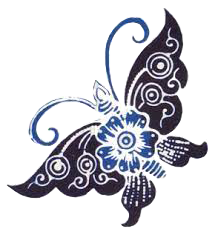Batik is a Technique
0 minutes read
What is Batik?
Batik is a technique for dyeing fabric using hot wax as a resist. First hot wax is applied with a brush or a tjanting tool (a small copper cup with a spout) where white is desired on the design. Then the fabric is dyed and rinsed. The dye doesn't go where the wax was applied. After it dries, more hot wax is put where the existing color is desired. These steps are repeated until the desired effect is achieved. Then the wax is removed by boiling in water or ironed between sheets of paper.
Who started it?
Batik was developed over 2000 years ago in Asia, and was perfected in Indonesia, particularly Java.
Mass-produced or Hand-produced?
Many of the batiks made in Indonesia today are mass produced using blocks dipped into wax and stamped onto the fabric, or most recently computers are used. My batiks are all individually hand-made using brushes or a tjanting tool.
Why batik instead of other methods?
The batik process allows the dye to penatrate all the fibers of the fabric, so that the colors are more intense and permanant. With many other techniques (silk screening, hand-painting) only the surface fibers are dyed. Some batiks are made with resists other than wax, which are easier to remove. Using wax creates beautiful "crackled" designs, unachievable with other methods.

